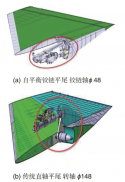Not sure how well can composites handle mechanical load as we know canards needs to handle fare amount of aerodynamic load. So far I've only seen composites used in skin.
Composite has been used everywhere except the structure inside the wing. It is even used for the wingbox (section joining the wings under the fuselage) in MC21. C-919 also has a parallel program of composite wingbox but opted aluminium for the moment.
Also, if canards are invisible to radar then why the stealth treatment on the edge?
A material being radar transparent is not the same thing of stealth of the aircraft. The canard has metal axis and machnics to connect to the fuselage. Transparent material exposes the internal metal structure. It is WORSE for RCS reduction to use a naked composite component than a well-shaped metal piece. So the surface of the composite material has to be treated no less than metal to conceal the internal metal skeleton.
In short, using composite material has nothing to do with stealth unless the whole aircraft including engine and radar are made of plastics.

